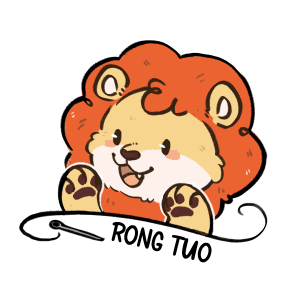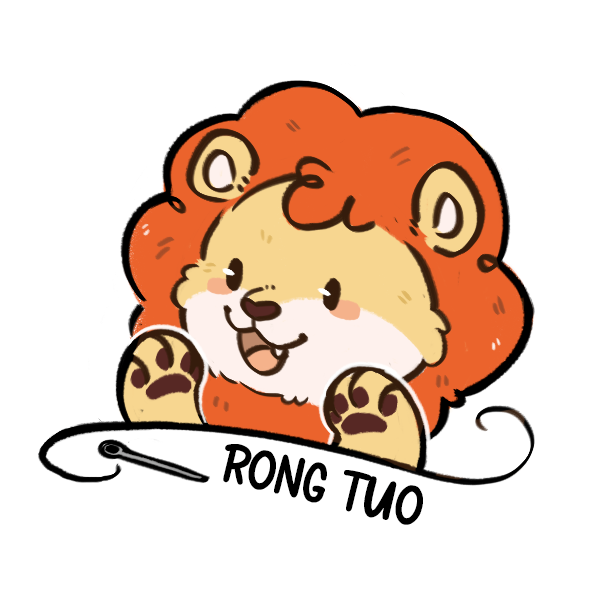Tavalised ja kaasaegsed mõmmetäisloomade valmistamise tehnikad
Käel õmmeldud meetodid: kunstniklik käsitöö kohandatud mõmmetäisloomades
Käel õmmeldud mõmmetäisloomad olid traditsiooniliselt väga austatud nende käsitööliste omaduste tõttu. Iga käel valmistatud mõmmetäisloom eristub just unikaalsuse poolest, mida massiliselt valmistatud loomad omada ei saa. Lisaks on sajandeid säilinud eriline tehnikas ja oskus, mis rõhutavad käsitöölistena valmistatud mõmmetäisloomade väärtust ja ainulaadsust. Sageli peetakse selliseid mõmmetäisloomi kogutavate esemetena, kuna ühe looma valmistamine võib võtta päevi või isegi nädalaid. Esmaspäeval mainitud õmblustehnikad, nagu kaetõmm ja astmetõmm, on olulised käel õmmeldud mõmmetäisloomade puhul; viimane tagab nii tugeva õmbluse kui ka atraktiivse välimuse. Seega suurendab see märgatavalt mõmmetäisloomade vastupidavust ja meeldivust.
Käsitööna valmistatud mõmmide turul on endiselt kõrge nõudlus, kuna ostjad on üha rohkem huvitatud "käsitööd" ja "unikaalsetest" toodetest. Samuti näitab käsitöötoodete nõudluse aeglustumise märke, kus turuuuringute ekspertide andmetel on turukasv 7% aastas ja toidab jätkuvalt tarbijate nõudlust kohandatud ja kunstnikliku kvaliteediga toodete järele. See on kindel tee kaasa ainulaadsetele käsitööplüssloomadele tehnoloogia ajastul ning näitab, et kODU käsitööna valmistatud mõmmide järele on endiselt suur nõudlus!
Automaatne lõikamine ja õmblus: Efektiivsus suurtõhus tootmises
Automaatika villist mõmmide tootmises on muutnud seda turgu. Villist mõmmide tootmises automaatika on kogu tööstusharu revolutsiooni läbi teinud, vähendades tootmisel kuluvat aega, samuti on kulud langenud ja individuaalsed villismõmmid on nüüd kõigi jaoks kättesaadavad. Automaatsete lõikamis- ja õmmeldusmasinad kasutavad üldiselt tipptehnoloogiat, tagades täpsuse ja ühtsuse, mis on hädavajalik kvaliteedi hoidmiseks suurtüketootmises. Need süsteemid kasutavad arvutiga juhitavaid disainimalle, et täpselt lõigata kangaid ja teostada keerukaid õmmeldusmustreid, mis käsitsi tehes oleks aeganõudev.
Statistika abil teame, et automatiseerimine võib aitata meie tööstuses saavutada vajaliku tõhususe, samadesse ruumidesse ja inimestega saavutades kuni 40% suurema mahuga ning kindlasti madalamate käikumiskuludega. Kasvava trendi keskel tellimustööna valmistatud mõmmkonnade valmistamisel võimaldab automatiseerimine tootjatel tõhusalt nõudlusele reageerida, säilitada kõrge kvaliteeti ja vähendada veo tõenäosust. See tehnoloogiline uuendus muudab mõmmkonnade valmistamise tööstust, võimaldades joonistustest valmistada tellimustööna mõmmloomi massiliselt ning järgida tarbija nõudmisi!
Kontseptist loomiseni: disaini üleviimine kohandatud mõmmloomideks
Jooniste digitaalne töötlemine kohandatud mõmmloomide valmistamiseks joonistustest
Esimesena tuleb mainida, et sketside digiteerimine on vajalik komponent käsitsi joonistatud sketside digiteerimisel, millest tehakse kohandatud täitemõmm. Disaineri ülesandeks on kohandada ja täpsustada traditsioonilisi sketse digitaalses keskkonnas, et tagada lõpliku täitemõmma kvaliteet võimalikult täpne. Digitaalsete tööriistade kasutamine võib ka oluliselt hõlbustada tööprotsessi, võimaldades disainereil täpselt kontrollida kujundeid ja värve, tagades seeläbi lõpptoote kvaliteedi, mis on peaaegu identne algse ideega. Nendeks toiminguteks on populaarsed nii Adobe Illustrator kui ka CorelDRAW, mis pakuvad aja redigeerimise ja kihtide arendamise võimalust, samuti jooniste vektoriseerimist ja kihtide paigutuse seadeid, mis on olulised täitemõmmade disainimisel.
Praktikas näed sellest ühe näite meie siin töös, kus disainija kasutas neid tööriistu mütoloogilise looma üksikasjaliku joonise "tõhusaks tõlkimiseks" pehmeks mänguasjaks. Selle saavutuse tulemus on tõendiks digitaalse tehnoloogia jõust disaini valdkonnas, kus loovus ja tehnoloogia kohtuvad, et pakkuda sulle kvaliteetseid individuaalselt valmistatud pehm mänguasju, millel on detailne täpsus ja kõrge kvaliteet. Digitaalse revolutsiooni abil saavad ettevõtted tagada oma klientidele, et isiklik visioon saab viisil, mis on professionaalne ja ajakohane, ka reaalandmetes teoks tehtud.
3D prototüüpimine keerulise kujundi reprodutseerimiseks
3D prototüüpimine on mängu muutja keeruliste kohandatud villase mänguasjade disainide jaoks, kuna see võimaldab täpset detailset iseloomukunsti dubleerimist. 3D trükitehnoloogia on disainiprotsessi osaks, mis annab kasutajatele võimaluse luua käsitletavaid mudeleid ilma disainiarenduse välja pakkumiseta. Protsess võimaldab enne tootmise alustamist teostada reaalseid katkestusi ja funktsionaalsuse kohandusi, vähendades vigu ja parandades disaini täpsust.
Tarkvara, mis on ehitatud 3D mudelitega, nagu AutoCad ja Rhino, võimaldavad meil digitaalsed ideed üle kanda reaalseks kunstiteoseks. Masside jaoks: kui prototüüpimisel kasutatakse 3D tehnoloogiat, väidavad ettevõtted, et nad säästavad nädalaid aega ja tuhandeid dolarid disainidel, mille korrektset valmistamist enne kohapealseid 3D masinaid ei õnnestunud saavutada. Üks hea näide sellest on ettevõte, mis suutis 3D trükitehnoloogiat kasutada kogumi kohandatud villaste mõmmide prototüüpimiseks, mis põhinesid fantaasiakujudel. Nad saavutasid 30% võrra lühema tootmisaja ja parema disainitäpsuse. 3D prototüüpimine võimaldab ettevõtetele luua keerukaid või kohandatud disaine vastavalt kasvavale kliendi nõudlusele detailsema ja ainulaadsema villaste mõmmide järele ning lõpetab ebatõhusa tootmise.
Materjali Valik ja Valmistamise Protsessid
Premium kangaste valik ohutuse ja pehmuse tagamiseks
Selleks, et seda saavutada, on muu hulgas vaja tagada õige kangaste valik mõmmaste mänguasjade valmistamisel, keskendudes ennekõike ohutusele ja kliendirahulolu. Populaarsed valikud on puuvill, polüester ja veluursaad, mis on kõik pehmad ning suudavad vastu pidada beebi poolt mängimisele, samas kui need vastavad ohutusnõuetele. Näiteks hinnatakse puuvilla hingavust (vastsündinute puhul), ja veluursaadi pehmust on hästi teada (laste puhul). Kangaste valiku tähtsust kinnitab ka turuinfo, mis näitab, et üha rohkem tarbijaid eelistab osta mõmmasi mänguasju, mis on ohutud ja pehmad puudutada, tõestades kangaste mõju tarbivalikutesse.
Innovaatilised täitematerjalide tehnikad vastupidavuse tagamiseks
Kaasaegsed täitematerjalid pikendavad isiklikkude mõmmide elu oluliselt, mistõttu püsivad nad kümneid aastaid. Traditsioonilised täitematerjalid nagu polüestrikiud on kerged, kuju säilitavad ja odavamad. Kuid on arendatud ka uusi tehnoloogiaid, näiteks taaskasutatud materjalide kasutamist, et teha isegi kõige vastupidavamatest toodetest keskkonnateadlikele ostjatele sobivaid. Ekspertide arvates: kvaliteetne täitematerjal on mõmmimõmmi kaitse võti! Need materjalid pakuvad mitte üksnes meeldivat haigutustunnet, vaid mõjutavad ka mänguasja elu, mis näitab nende rolli mõmmimõmmi toimimisel!
Kvaliteedikontrolli standardid mõmmimõmmide tootmises
Õmbluskindluse testid pika elueaga mänguasjade jaoks
Õmbluse kvaliteet pehmelistes mänguasjades on väga oluline, et tagada ohutus ja kaua kestvus, eriti lastele mõeldud mänguasjade puhul. Traditsiooniline taktiilne kvaliteedikontrollimeetod, õmbluse tugevuse testimine, on laialdaselt kasutuses villase mänguasjatööstuses. Sellised kontrollid järgivad üldiselt kehtestatud standardeid, näiteks ASTM F963, EN71 jne, mis määravad teatud nõuded mänguasjade ohutuse kohta. Tootjad saavad tagada, et õmblused ei laguneks tavapärase kasutamise käigus, kui õmbluskohti testitakse põhjalikult, mis on väga oluline kliendi rahulolu tagamisel. Kui seda arvestamata jätta, võib mänguasja ohutus olla ohus, mis võib viia tooterecallini või rahulolematute tarbijateni ning kahjustada brändi mainet. Tööstusdokumentatsioon näitab, et selline kvaliteedikontroll on vajalik tootekindluse ja tarbija usalduse tagamiseks konkureerivas mänguasjatööstuses.
Ohutuskohustuste kontrollimine lastesõbralike toodete puhul Tooted
Pehmetäise tootmise ohutusreguleerimine hõlmab mitmeid inspekcioone vastavuses erinevatele standarditeele, näiteks ASTM F963 Ameerika Ühendriikides või EN71 Euroopas. Need reguleerimised puudutavad laste tervist ja ohutust ning hõlmavad ohutusküsimusi, näiteks mürgistamise või kõhukinnisuse ohtu, põlemisohutust ning mänguasja valmistamiseks kasutatud materjali. Kui nendega ei ole vastavust, seab see brändi mitte ainult õiguslike sammude ohutusse, vaid ka brändi mainega, mis kahjustab tarbijate usaldust. Üks küsitlus näitas, et 85% vanematest peab ohutussertifikaate otsustava tegurina mänguasjade ostmisel – seepärast on kontrollid nii olulised. Vastavuse kontrollimise ebaõnnestumine viib kallite tagasikõnede ja kliendilojaalsuse kaotuseni, seega peavad tootjad tagama, et nad allikad vastaksid nendele ohutusstandarditele, kui nad soovivad tõsiseks võetavaks ja jätkata äritegevust.
Täiendavad tehnoloogiad määratud pehmetäise tootmises
AI-abi pakkuv mustriprojekteerimine ainulaadsete loomiste jaoks
Kohandatud villist mänguasjade disain ja AI tehnoloogia AI tehnoloogia muudab kohandatud villist mänguasjade disaini nägu, muutes mustriloomist. See läbimurde tehnoloogia võimaldab klientidel luua ainulaadseid ja isiklikke villiseid loomi, mis sobivad igaühele! AI mustriloomes on oluline eelis, et see toetab nii väikeste partide kui ka suuremahulise tootmise mustriloomist ja tagab täpsuse, ühtsuse ning väikese inimvigade arvu. Samuti on AI kasutamisel disainiprotsessis raskusi, näiteks suur algne investeering ja vajalikud ekspertteadmised. Ettevõtted nagu Disney Research on juba edukalt integreerinud AI disainitöövoogudesse ja näinud suurt mõju villiste loomade kohandatud disaini loomisel, mis võlub tarbijaid. See areng sarnaneb suurema ulatusega revolutsiooniliste tootmispraktikate arenguga, mis viivad revolutsiooniliste toodeteni – AI on mänginud olulist rolli villist mänguasjade tööstuses.
Keskkonnateadlikud tootmispraktikad ökotrubikate jaoks
Kasvab uuesti kasutatud pehmike mänguasjade tootmise suund, kui tarbijad nõuavad keskkonnateadlikku mängimist. Pehmike mänguasjade tööstus peab eriti keskenduma keskkonnasäästlike protsesside kasutuselevõtmisele, mis põhinevad keskkonnasõbralikumatel toodetel. Kui rakendada jäätme vähendamiseks mõistlikke meetodeid, näiteks korduskasutada kasutamata kangaid ja kasutada lagenduvaid elemente, saab tööstus oma rohelisi krediite veelgi tõstta. Ühe uuringu kohaselt eelistab 72% inimestest roheliste mänguasjade ostmist, ja see arv on tõusev. Selliste programmide kaasamine tootmisprotsessi aitab ettevõtte mainet kaitsta ja tugevdada ning järgida tarbijate suundumust keskkonnateadlike toodete poole. Näiteks lojaalsus keskkonnateadlikkuse suhtes on kasulik mitte ainult planeedi, vaid ka brändi maine ja looduslähedaste klientide poole pöörata.
KKK-d
Kas käsitsi õmmeldud pehmikloomad on vastupidavamad kui masinloomad?
Jah, käsitööna valmistatud villased mänguasjad on sageli vastupidavamad tänu täpsele õmblustehnika kasutusele nende valmistamisel, näiteks ääristusõmbluse ja tõusõmbluse. Need tehnikad parandavad mänguasja tugevust ja atraktiivsust.
Kuidas automatiseerimine mõjutab kohandatud villaste mänguasjade tootmise kulusid?
Automaatne süsteem vähendab tootmiskulusid tõhususe ja täpsuse suurendamise kaudu, võimaldades suuremahulisi kohandatud villaste mänguasjade tootmisi ilma kvaliteedi ohverdamata.
Mis on digitaalsete tööriistade roll kohandatud villaste mänguasjade disainimisel?
Digitaalsetööriistad nagu Adobe Illustrator ja CorelDRAW on olulised käskirjeldatud disainide digitaalseks vormistamiseks, tagades, et lõplik villane mänguasi vastab originaalkavandile täpse kontrolli kaudu kujundite ja värvide üle.
Miks on 3D prototüüpimine oluline villaste mänguasjade tootmisel?
3D prototüüpimine on oluline, kuna see võimaldab disainijatel luua keeruliste disainide reaalseid mudeleid, vähendades tootmisvigasid ja kiirendades tootmisprotsessi.
Kuidas tagavad tootjad mõmmaste mänguasjade ohutust?
Tootjad teostavad ohutusstandardite kontrolli, järgides ASTM F963 ja EN71 standardeid, et tagada mõmmaste mänguasjade ohutus seoses materjalide toksilisuse, ämbliku ohtude ja süttivusega.


